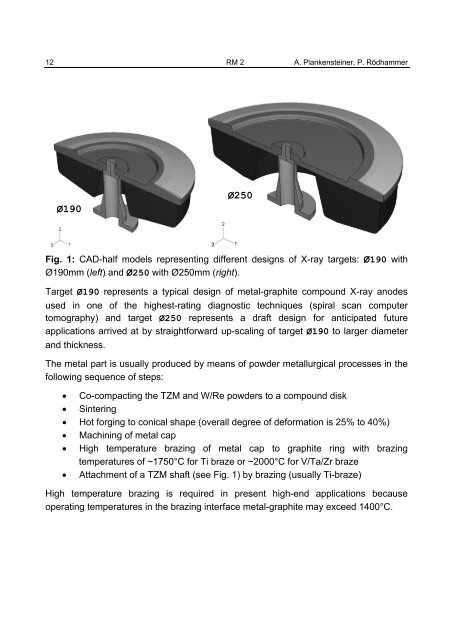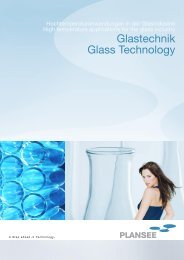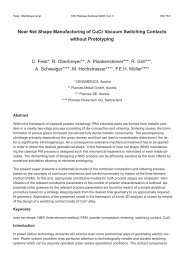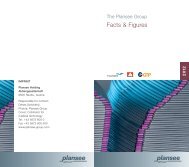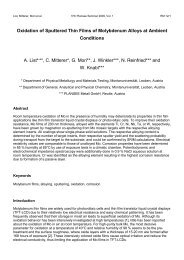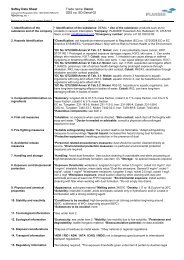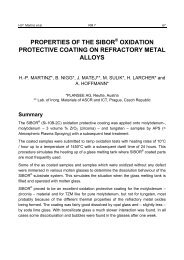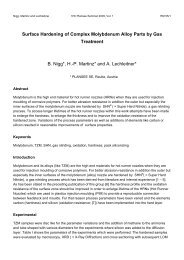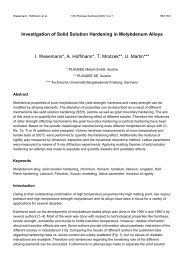Finite Element Analysis of X-Ray Targets
Finite Element Analysis of X-Ray Targets
Finite Element Analysis of X-Ray Targets
You also want an ePaper? Increase the reach of your titles
YUMPU automatically turns print PDFs into web optimized ePapers that Google loves.
12 RM 2 A. Plankensteiner, P. Rödhammer<br />
Ø190<br />
Fig. 1: CAD-half models representing different designs <strong>of</strong> X-ray targets: Ø190 with<br />
Ø190mm (left) and Ø250 with Ø250mm (right).<br />
Target Ø190 represents a typical design <strong>of</strong> metal-graphite compound X-ray anodes<br />
used in one <strong>of</strong> the highest-rating diagnostic techniques (spiral scan computer<br />
tomography) and target Ø250 represents a draft design for anticipated future<br />
applications arrived at by straightforward up-scaling <strong>of</strong> target Ø190 to larger diameter<br />
and thickness.<br />
Ø250<br />
The metal part is usually produced by means <strong>of</strong> powder metallurgical processes in the<br />
following sequence <strong>of</strong> steps:<br />
• Co-compacting the TZM and W/Re powders to a compound disk<br />
• Sintering<br />
• Hot forging to conical shape (overall degree <strong>of</strong> deformation is 25% to 40%)<br />
• Machining <strong>of</strong> metal cap<br />
• High temperature brazing <strong>of</strong> metal cap to graphite ring with brazing<br />
temperatures <strong>of</strong> ~1750°C for Ti braze or ~2000°C for V/Ta/Zr braze<br />
• Attachment <strong>of</strong> a TZM shaft (see Fig. 1) by brazing (usually Ti-braze)<br />
High temperature brazing is required in present high-end applications because<br />
operating temperatures in the brazing interface metal-graphite may exceed 1400°C.


